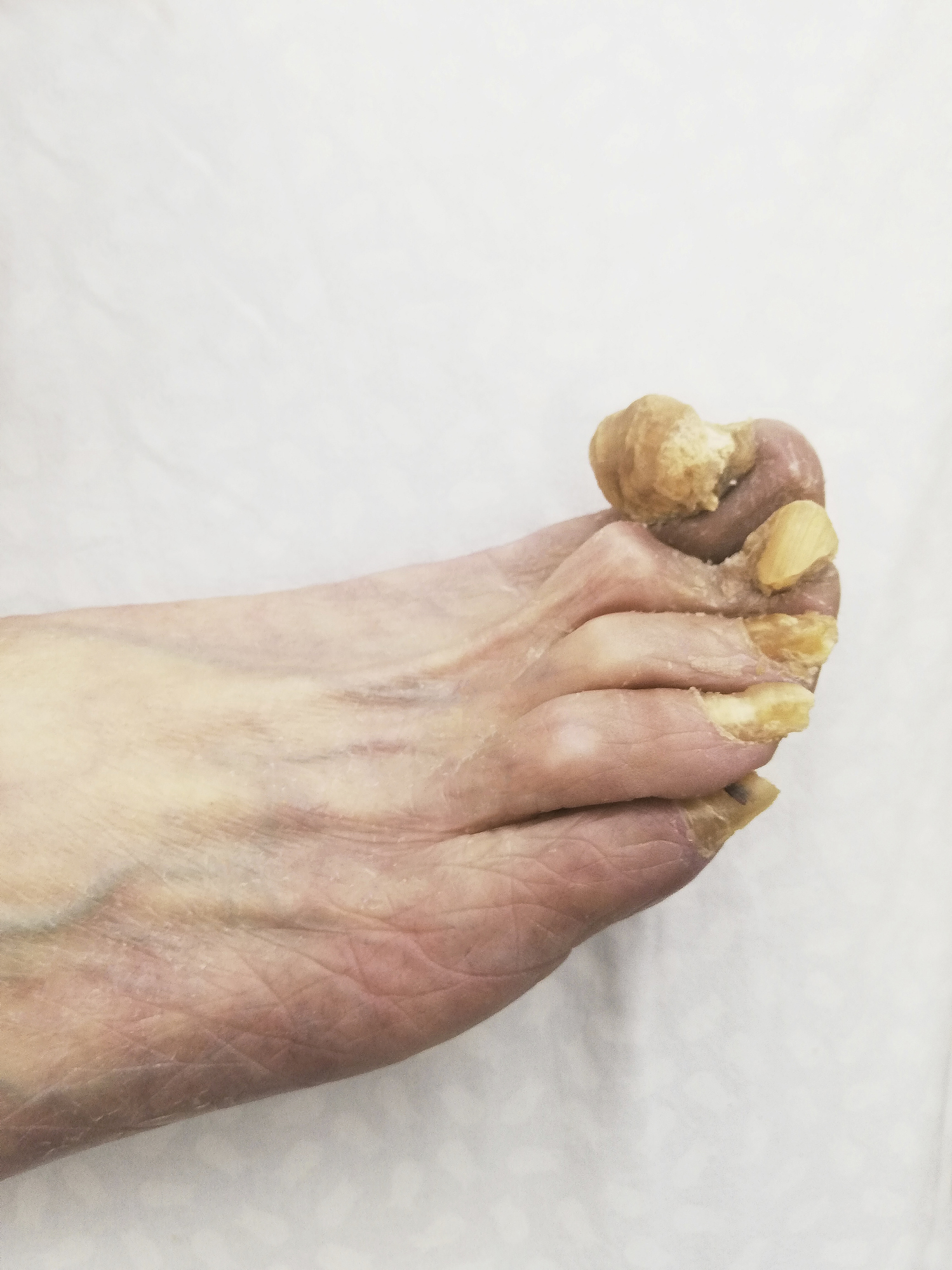
Onychomycosis, commonly known as a fungal nail infection, is a condition that affects the nails, usually the toenails, causing them to become discolored, thickened, and brittle. While it can be challenging to completely prevent onychomycosis, there are several measures you can take to reduce the risk of developing it. Here are some preventive measures:
- Practice good foot hygiene: Wash your feet regularly with soap and water, making sure to clean the area around and under the nails. Dry your feet thoroughly, especially between the toes, as fungi thrive in warm and moist environments.
- Keep your nails trimmed: Trim your nails straight across and file down any thickened areas. Avoid cutting them too short or rounding the corners, as this may increase the risk of ingrown nails, which can lead to nail infections.
- Wear proper footwear: Choose shoes that allow your feet to breathe and keep them dry. Opt for breathable materials such as leather or mesh. Avoid wearing tight, closed-toe shoes for prolonged periods, especially if your feet tend to sweat excessively.
- Use protective footwear in public areas: Wear shower shoes, sandals, or other protective footwear in public places like communal showers, swimming pools, gyms, and locker rooms. These areas can harbor fungi, and direct contact can increase the risk of infection.
- Avoid sharing personal items: Do not share items such as nail clippers, files, socks, or shoes with others, as this can spread fungal infections. Fungi can survive on these items and be easily transmitted.
- Choose breathable socks: Wear socks made of moisture-wicking materials such as cotton or wool to help keep your feet dry. Change your socks regularly, especially if your feet sweat excessively.
- Protect your feet in humid environments: If you regularly expose your feet to humid conditions or sweat excessively, consider using antifungal powders or sprays on your feet and inside your shoes to help keep them dry and inhibit fungal growth.
- Avoid nail trauma: Protect your nails from injuries that could lead to nail bed damage, as it can create an entry point for fungal infections. Take precautions when engaging in activities that may cause trauma to your nails, such as sports or manual labor.
- Maintain overall foot health: Ensure good circulation to your feet by exercising regularly, avoiding prolonged periods of sitting or standing, and keeping your feet elevated when possible. If you have any underlying medical conditions, such as diabetes, that can affect foot health, follow your healthcare provider’s recommendations for managing them.
- Be cautious with nail salons: If you visit a nail salon, ensure that they maintain proper hygiene practices, including sterilizing their instruments. Consider bringing your own nail care tools to reduce the risk of cross-contamination.
If you suspect you have onychomycosis or any other foot condition, it’s essential to consult a healthcare professional or a podiatrist for an accurate diagnosis and appropriate treatment. They can provide guidance tailored to your specific situation and recommend antifungal medications or other treatments if necessary.
See More on Video

Overcoming Onychomycosis™ By Scott Davis The program can help you to treat your nail fungus naturally. Once you follow this program, you do not need to spend on expensive treatments to prevent a recurrence.